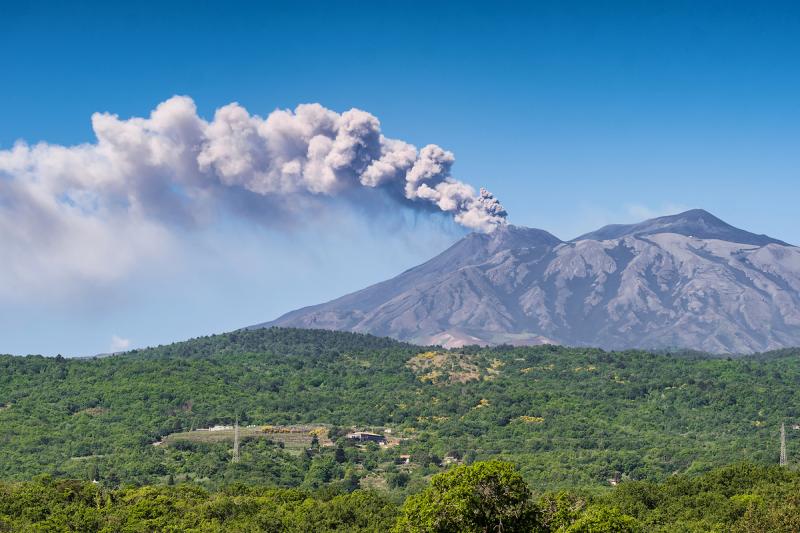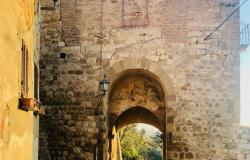Wonders of Italy: Mount Etna
ITA:

Use player to listen to Italian version
Among Italy’s wonders are not just works of art and incredible monuments; even nature has been generous with our Bel Paese. One natural wonder that never ceases to amaze is Mount Etna in Sicily, Italy’s tallest volcano, reaching a height of 3,326 m (10,912 ft); it is the world’s most active volcano.
Etna can be both an eden and hell, depending on where you are or what the volcano decides to do. A moment you are in an almost martian landscape, the next everything changes and you’re surrounded by greenery and woods. The fertile volcanic soils favor agriculture, with vineyards and orchards spread across the lower slopes of the mountain and the broad plain of Catania to the south.
And yet even where it’s most green, Etna’s fire continues to burn underground. It’s an area of extremes: fire but also ice, as the volcano guards what is considered the southernmost glacier in Europe, the Ice Cave.
Etna is one of Sicily's main tourist attractions, with thousands of visitors every year. You can access it through the road that leads to the Sapienza Refuge (1910 m). From there, you can take the cableway that runs uphill to an elevation of 2500 m, and reach on foot the summit craters area at 2920 m.
The craters near the cableway never reopened as the solidified magma acts as a cap. The summit craters are constantly active; Etna is a mountain that is alive, whose landscape changes continuously.
The Ferrovia Circumetnea, or Round-Etna railway, is a narrow-gauge railway built at the end of the 19th century that runs around the volcano in a 110-km long semi-circle starting in Catania and ending in Riposto 28 km north of Catania.
As incredible as it may sound, there are two ski resorts on Etna: one at the Sapienza Refuge, with a chairlift and three ski lifts, and a smaller one at Piano Provenzana near Linguaglossa, also with three lifts and a chairlift.
Tra le meraviglie italiane non ci sono solo opere d'arte e monumenti incredibili; anche la natura è stata generosa con il nostro Bel Paese. Una meraviglia naturale che non smette mai di stupire è l'Etna in Sicilia, il vulcano più alto d'Italia, che raggiunge un'altezza di 3.326 m (10.912 piedi); è il vulcano più attivo del mondo.
L'Etna può essere sia un eden che un inferno, a seconda di dove ti trovi o di cosa decide di fare. Un attimo sei in un paesaggio quasi marziano, e quello successivo tutto cambia e sei circondato dal verde e dai boschi. I fertili terreni vulcanici favoriscono l'agricoltura, con vigneti e frutteti sparsi sulle pendici inferiori della montagna e l'ampia pianura catanese a sud.
Eppure, anche dove è più verde, il fuoco dell'Etna continua ad ardere sottoterra. È una zona di estremi: fuoco ma anche ghiaccio, poiché il vulcano custodisce quello che è considerato il ghiacciaio più meridionale d'Europa, la Grotta di Gelo.
L'Etna è una delle principali attrazioni turistiche della Sicilia, con migliaia di visitatori ogni anno. Vi si accede tramite la strada che porta al Rifugio Sapienza (1910 m). Da lì si può prendere la funivia che sale fino a quota 2500 m, e raggiungere a piedi la zona dei crateri sommitali a 2920 m.
I crateri vicino alla funivia non si sono mai riaperti poiché il magma solidificato funge da tappo. I crateri sommitali sono costantemente attivi; L'Etna è una montagna viva, il cui paesaggio cambia continuamente.
La Ferrovia Circumetnea è una ferrovia a scartamento ridotto costruita alla fine del XIX° secolo che gira intorno al vulcano in un semicerchio lungo 110 km partendo da Catania e terminando a Riposto 28 km a nord di Catania.
Per quanto possa sembrare incredibile, ci sono due stazioni sciistiche sull'Etna: una al Rifugio Sapienza, con una seggiovia e tre ski lift, e una più piccola a Piano Provenzana presso Linguaglossa, anch'essa con tre impianti di risalita e una seggiovia.











